32 cat breeds most likely to suffer from separation anxiety
Learn the cat breeds most likely to suffer from separation anxiety.
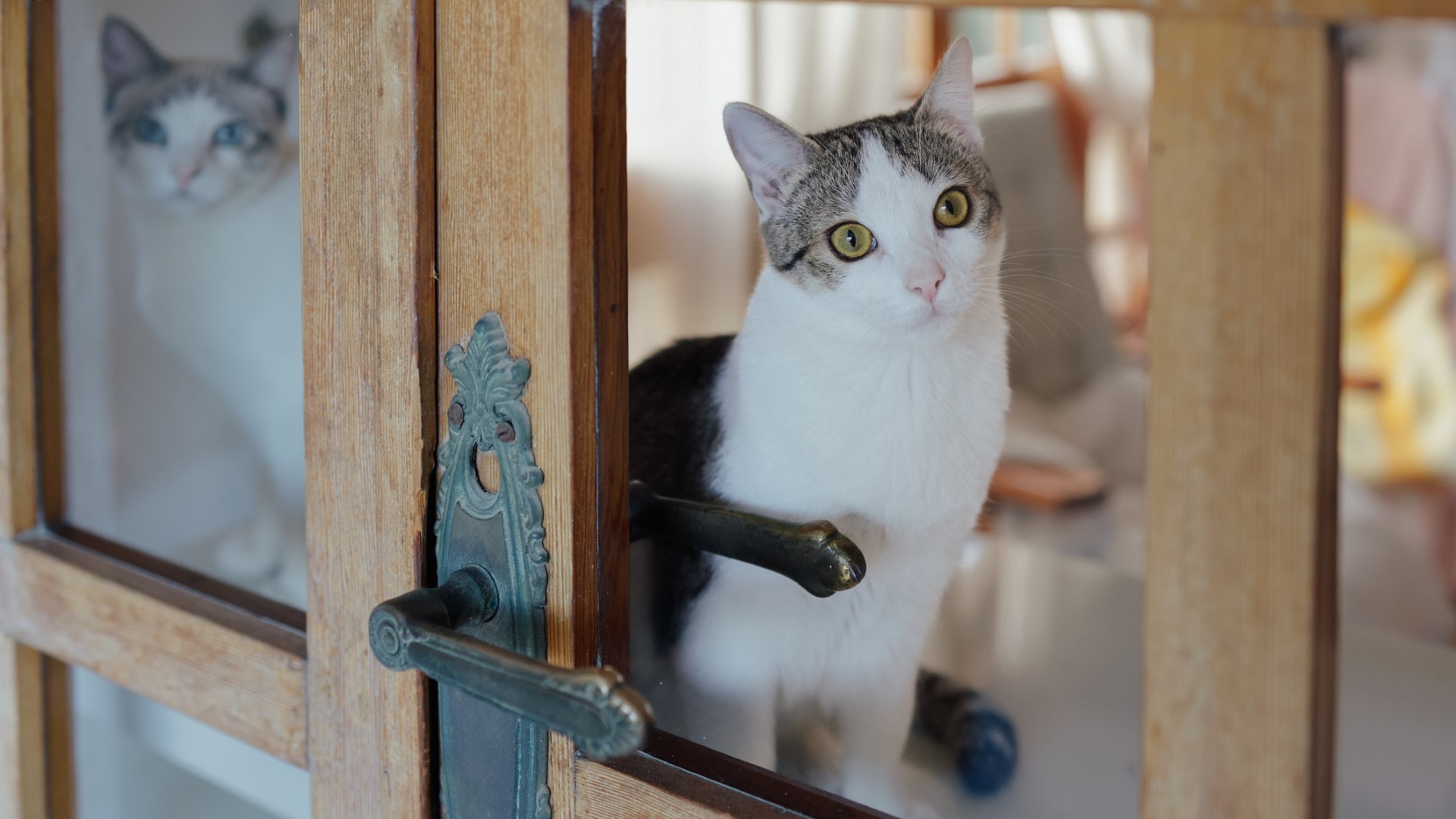
While most studies and conversations around separation anxiety focus on canine companions, our feline friends can also equally suffer from this condition. Many cats bond strongly with their human caregivers and can struggle when their favorite people leave them at home.
Signs of separation anxiety in cats may include things like destructive behaviors, distressed vocalizations, or urinating outside of their litterbox even when it's filled with the best cat litter around.
If your cat is exhibiting some or all of these signs, it's important to reach out to a reputable cat behaviorist for assistance. Some breeds of cats may be more prone to separation anxiety than others.
Below, we'll take a look at some cat breeds most likely to suffer from separation anxiety.
32 cat breeds most likely to suffer from separation anxiety
1. Japanese bobtail

The exact origin of the Japanese bobtail is a bit hazy, but we know they were officially recognized as a distinct breed in Japan in the 1960s. With powerful, long hind legs, and a muscular frame, the Japanese bobtail is made for jumping and climbing. Highly intelligent and playful, this breed thrives with an active family and lots of enrichment.
They often play fetch and love chasing one of the best laser toys for cats. Due to their high level of enrichment needs, this breed is not the best choice for someone who is frequently gone from home.
2. Turkish van
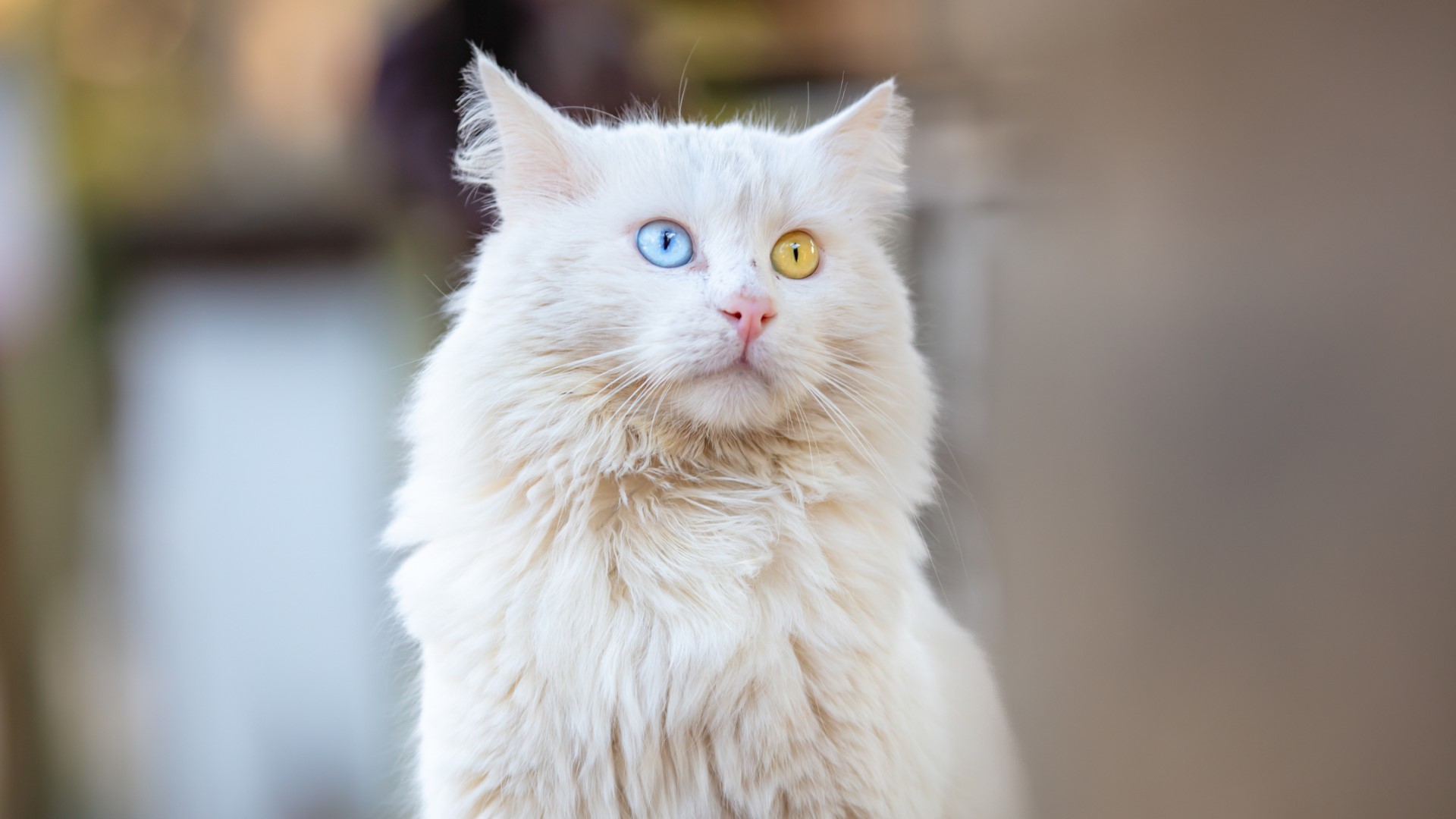
Breed historians generally agree the Turkish van likely originated from the regions of eastern Turkey, Iran, Iraq, and western Central Asia. Typically, this breed features a striking white, medium-length coat, sharply pointed ears, and blue or amber eyes. Some individuals have one blue eye and one amber eye. These cats love spending time with their people and are great mousers.
Get the best advice, tips and top tech for your beloved Pets
The Turkish van requires a lot of attention from her cat parents and loves going on adventures. To prevent separation anxiety in this breed, it’s best to spend lots of time together and include the kitty in as many activities as possible. This breed is known for acclimating well to leash walks so it may be worth investing in one of the best cat harnesses for this feline.
3. Ocicat
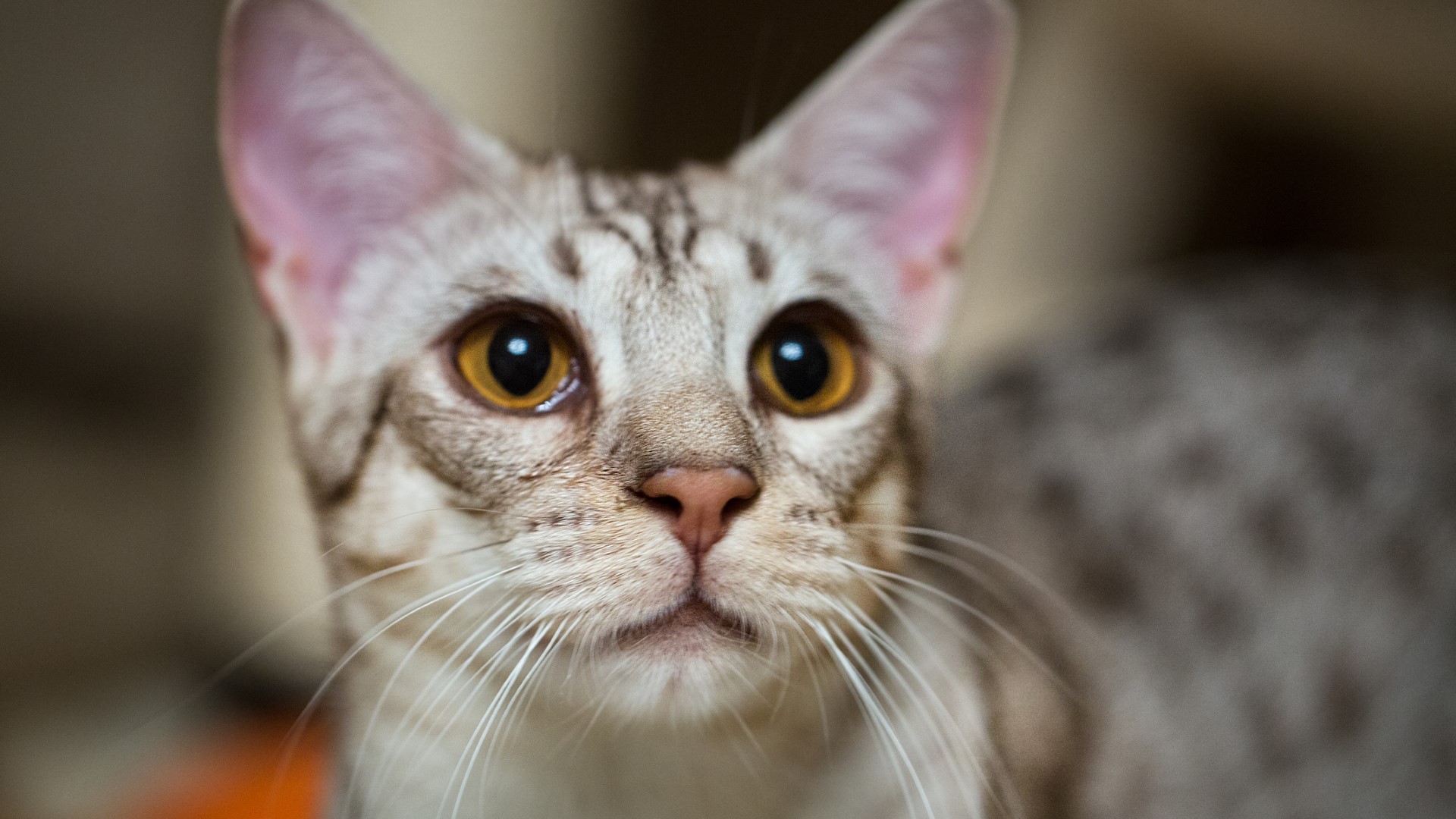
Originating in the U.S. in 1964 by the crossing of Abyssinian and Siamese cats, the ocicat features a slender build and wild-looking spots. They resemble miniature ocelots but have the personality of a people-oriented house cat. These cats are playful, energetic, vocal, and somewhat mischievous. They tend to bond strongly with one person in a family the most. Without consistent enrichment and social interactions, they can become distressed and destructive. These cats thrive with an active, playful family.
4. Bengal

Technically, the Bengal cat is a hybrid cross between a domestic cat (Felis catus) and the wild Asian leopard cat (Prionailurus bengalensis,), which is just one of the fascinating facts about Bengal cats.
Like their wild relatives, the Bengal cat features a gorgeously marbled coat, which comes in a range of colors. This breed is highly active, intelligent, and curious. They need consistent mental, physical, and social enrichment to thrive.
The Bengal is not a good option for folks who spend most of their time away from home. Bengal cat parents ideally will spend lots of time with them on indoor and outdoor adventures.
5. Norwegian Forest cat

Emerging in Scandinavia, the Norwegian Forest cat – regionally referred to as "Skogkatt" – is a gorgeous and incredibly dense-coated long-haired breed. Weighing up to 18 pounds, these kitties are hefty and sturdy. They love outdoor adventures and climbing trees. While they typically adore their family, these kitties aren’t usually lap cats. Instead, they love to play, observe wildlife, and prowl. Their fun-loving energy is just one of the reasons to love Norwegian forest cats.
Separation anxiety typically arises in these kitties when there’s a lack of stimulating activities in their environment. We recommend supplying this intelligent breed with cat trees, automated cat toys, and some of the best cat scratching posts to help keep them fulfilled.
6. LaPerm
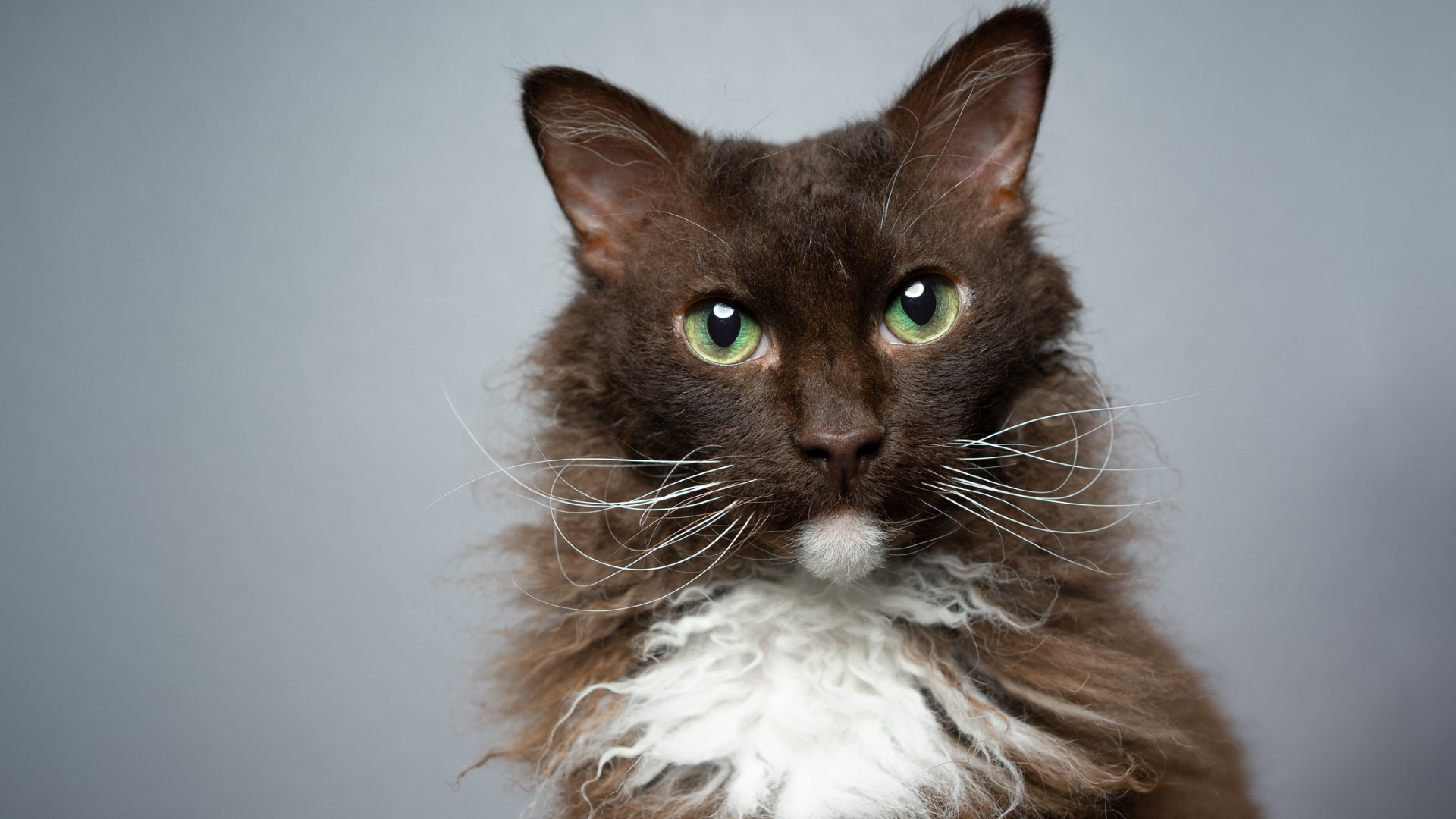
Arising from an Oregon farm in the 1980s, the LaPerm breed resulted from a spontaneous mutation resulting in fine, luxuriously soft, curly hair. While some LaPerm kittens are born bald or with straight hair, most begin to develop their signature coat by maturity.
This breed arose from purposefully bred barn cats. As a result, they are active and curious kitties who need lots of physical and mental enrichment. When consistently left alone they can become destructive and restless. If you’ll be keeping a LaPerm as an inside cat, make sure to supply them with the best toys for indoor cats to help keep them content.
7. Selkirk rex
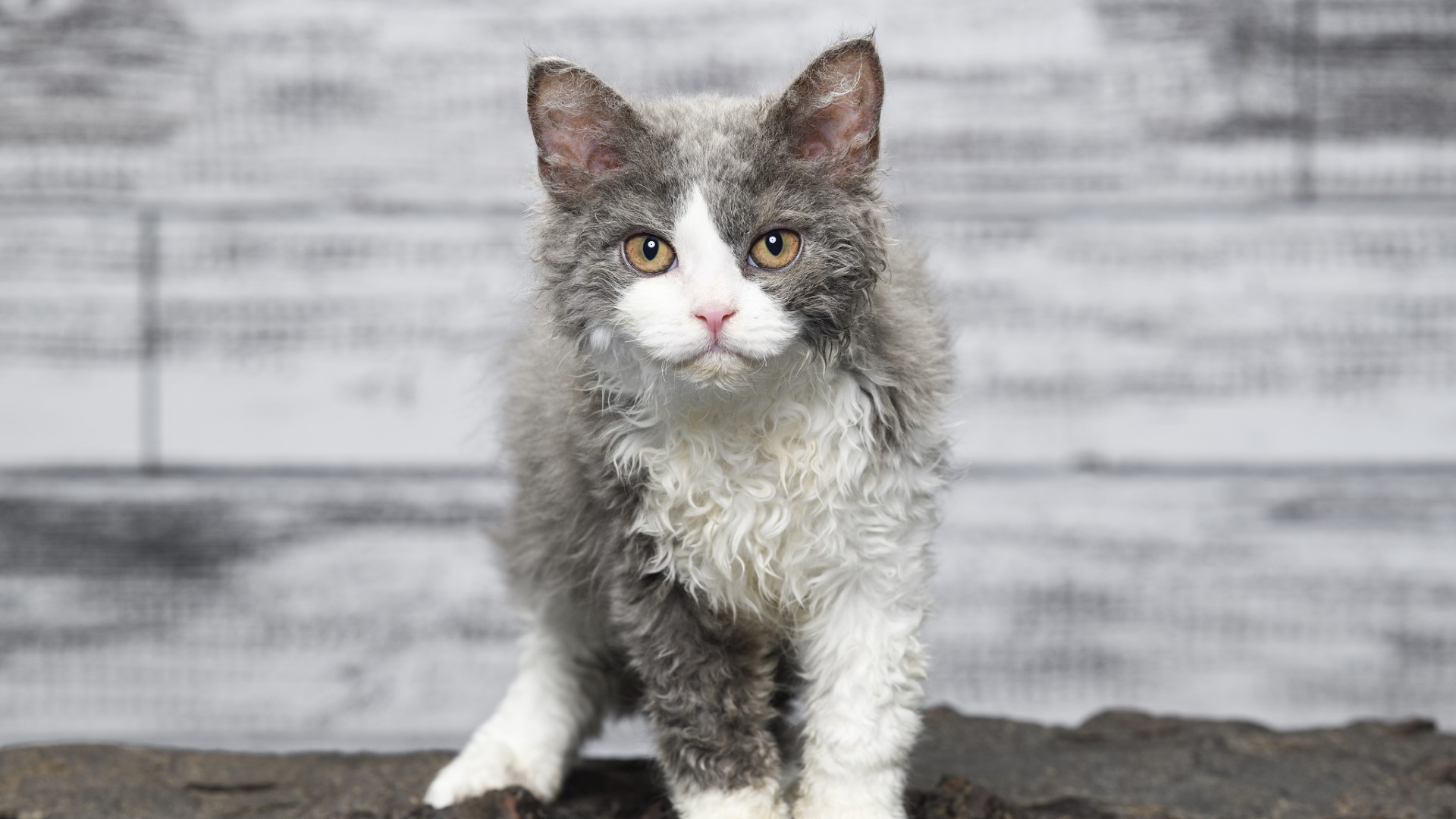
Originating in Montana in 1987, the Selkirk rex likely arose from a naturally occurring mutation causing wavy hair. Both long and short-haired versions of this breed exist. Unlike the Cornish and Devon rex breeds, the Selkirk rex does not produce extremely short-haired coats.
This rare cat has a laid-back temperament and affectionate personality. They love to snuggle with human family and can become quite anxious when consistently left alone. This cat is best suited for a family or individual who prefers to spend lots of time at home.
8. Somali
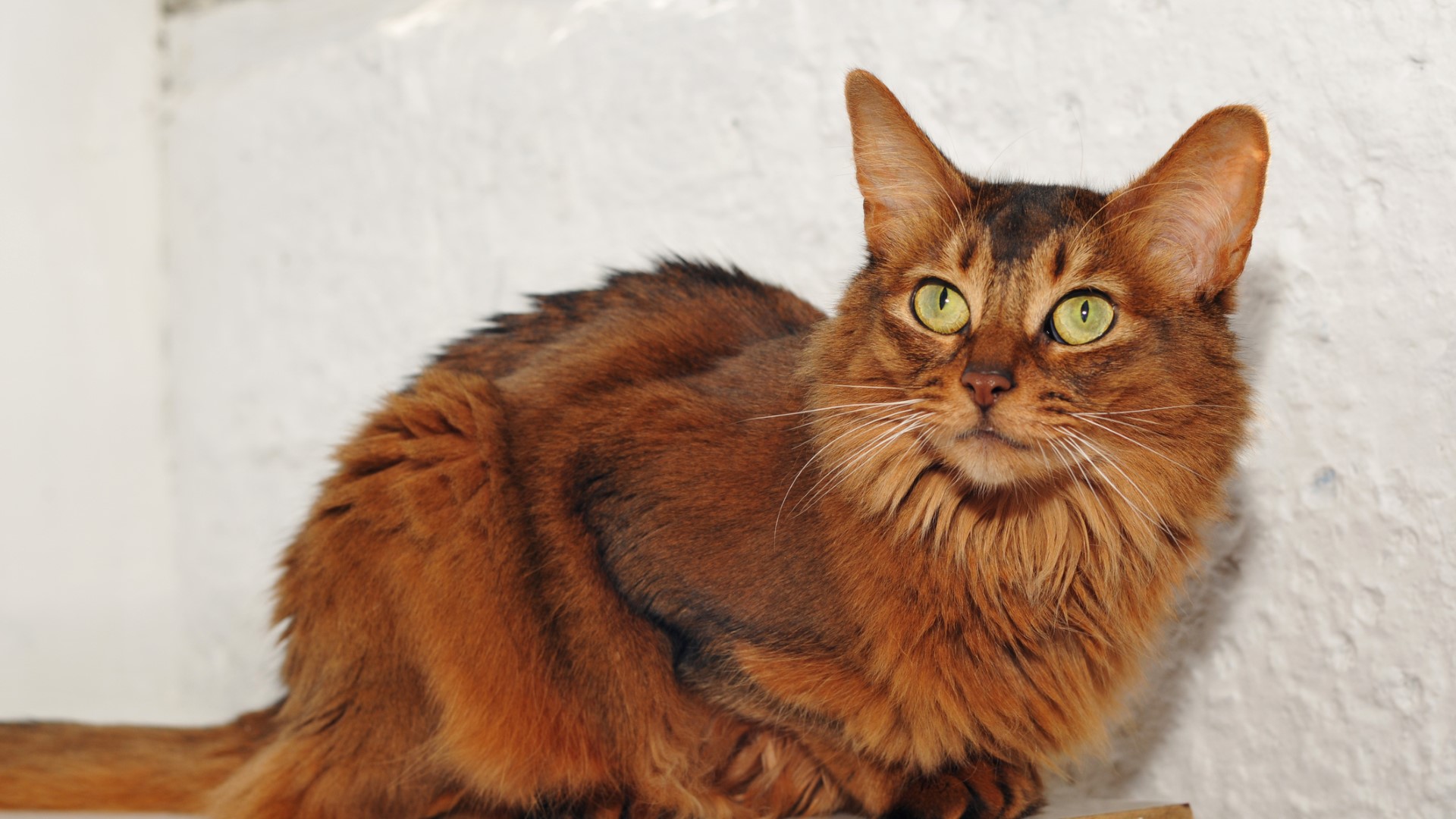
Agile, graceful, and athletic, the Somali is a cross of the Abyssinian with unknown long-haired breeds. This striking cat breed likely began in Great Britain in the early 1900s from cross-breeding an imported Abyssinian cat. These cats are wonderful family pets, easily bonding with humans and other animals.
They love to play and climb. This breed doesn’t usually develop separation anxiety unless they’re the only pet in the house, so it’s a good idea to welcome the Somali into your home if you have other cat-friendly pets.
9. British Shorthair
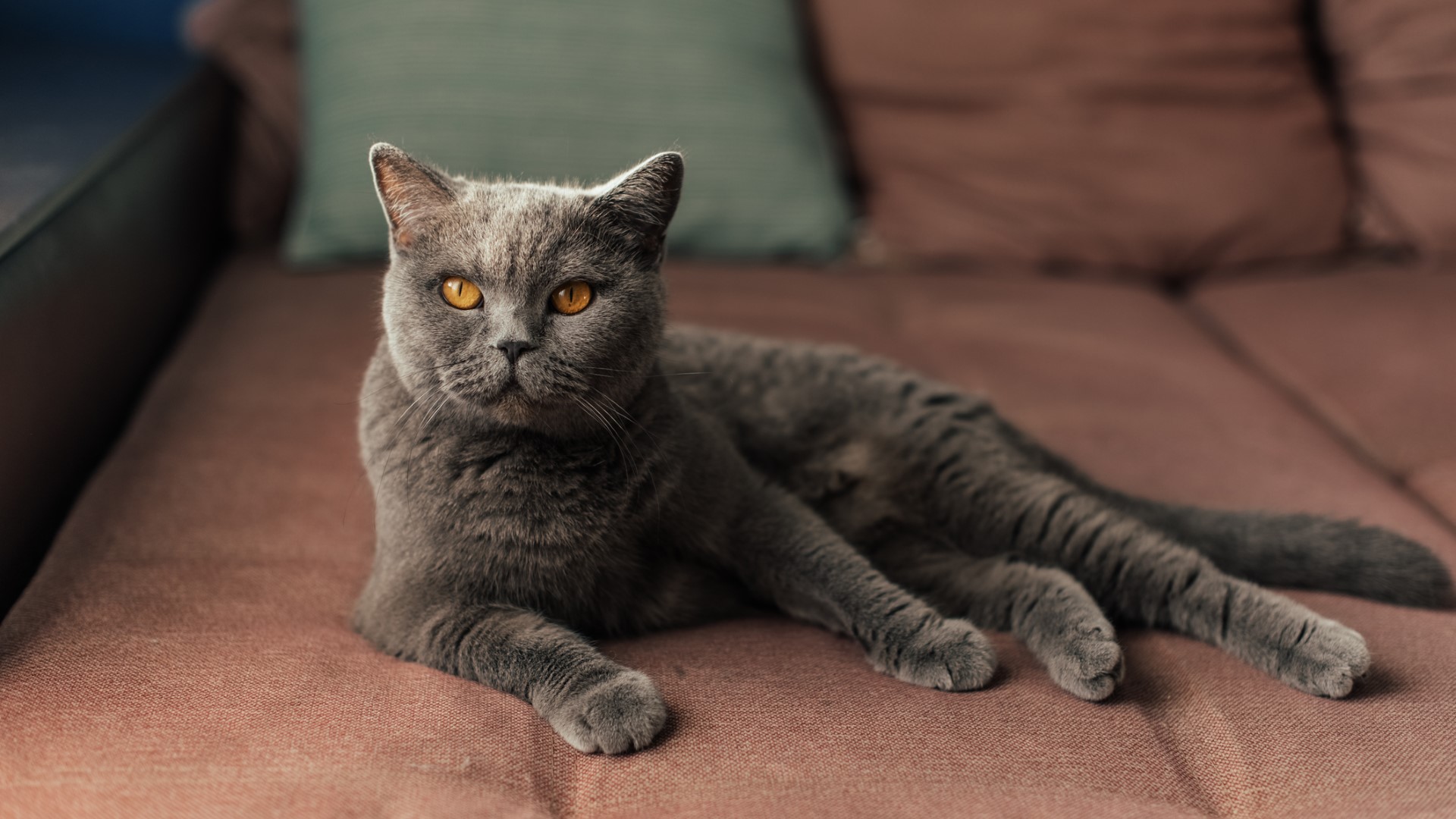
One fun fact about British Shorthairs is that they likely arrived in England via Roman conquest around the first century AD. They’re a stocky breed with a large, round face, wide-set and rounded ears, and thick, dense fur. While the British Shorthair enjoys being around their human family, they aren’t known for being the most cuddly.
While they can develop separation anxiety, this breed does tend to do well when left alone as long as they have consistent enrichment and the ability to climb. Try incorporating some of the best cat trees into your home.
10. Siamese

The beautiful and beloved Siamese cat originated from ancient Siam, now known as Thailand. By the 19th century, this breed had become a popular house pet from East Asia to North America.
Highly affectionate and people-oriented, the Siamese can struggle with anxiety when you leave the house. In a study published in PLOS One, researchers identified Siamese cats as one of the most likely breeds to suffer from separation anxiety.
11. Burmese
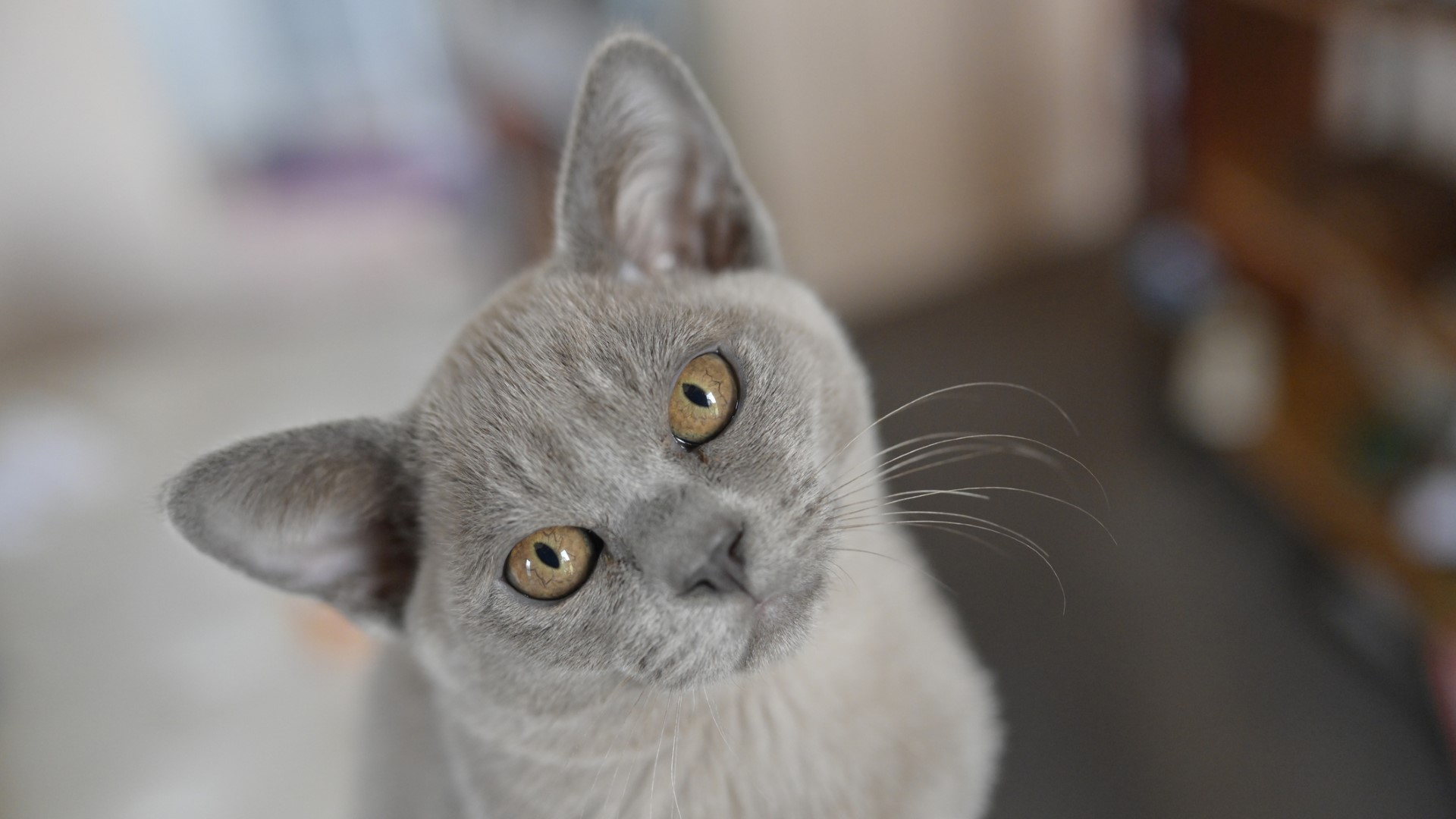
The lovely Burmese cat originates from the country of Myanmar (also known as Burma). Breeding of Burmese cats began in the U.S. in 1930. This breed is known for being puppy-like in their playfulness, affection, and desire to follow their people around. They're also known for enjoying fetch and quickly learning a range of cues using positive reinforcement. Like their Siamese cousin, the Burmese cat is highly affectionate and can struggle with separation anxiety.
12. Tonkinese

Officially accepted as a unique breed by the U.S. Cat Fanciers Association (CFA) in 1984, the lean, but muscular tonkinese originated from cross-breeding Burmese and Siamese cats in North America.
Playful, vocal, and athletic, the tonkinese is an affectionate and energetic breed best suited for active and social families. They thrive on attention and can suffer from separation anxiety when left alone. These cats typically enjoy sharing their home with other kitties and can benefit from the constant company of other household pets.
13. Maine coon
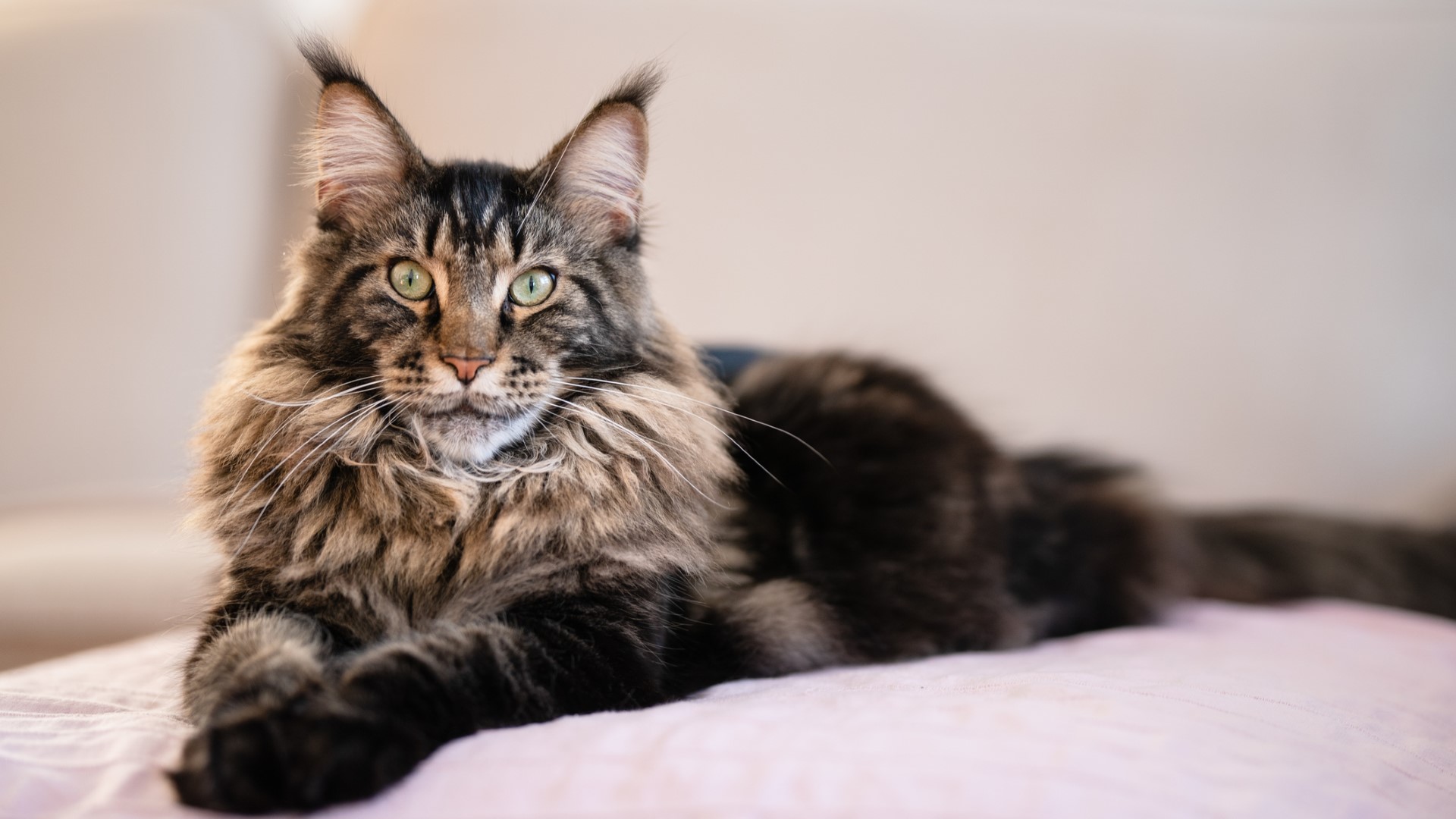
Incredibly popular as an extremely outgoing and affectionate large long-haired breed, the Maine coon loves being the center of attention. They're considered one of the most affectionate cat breeds. Many guardians describe these big kitties as dog-like in their friendliness and interest in fetching toys, roughhousing, and even playing in water, the Maine coon is a classic family pet.
They typically don’t do well with extended alone time and can become destructive without consistent social, physical, and mental enrichment.
14. Ragdoll

A fun fact about ragdoll cats is that they originated in the 1960s in Riverside, California, the beautiful and delicate-looking ragdoll is known for being cuddly, gentle, and extremely sociable. They tend to get along well with other household pets and often follow their favorite people around like a shadow.
Ragdoll cats are wonderful family pets as they will generally cuddle up with other kitties, cat-friendly dogs, and respectful children. While ragdolls are definitely one of the most low energy cat breeds, they can become quite anxious without consistent affection and social bonding.
15. Persian

Most breed historians agree that the Persian cat likely originated in or near ancient Persia, now present-day Iran. This breed is well-loved for its long, luxurious, silky coat and adorably cartoon-like face. Gentle, calm, and loving, but often a bit shy, the Persian cat is well-suited for a quiet and equally gentle family, just a few reasons to love Persian cats.
They tend to bond closely with their immediate family and can be a bit reserved around strangers. Some Persian kitties can become overly cautious and insecure if consistently left alone. They tend to thrive with the assurance and support of their human caregivers.
16. Sphynx
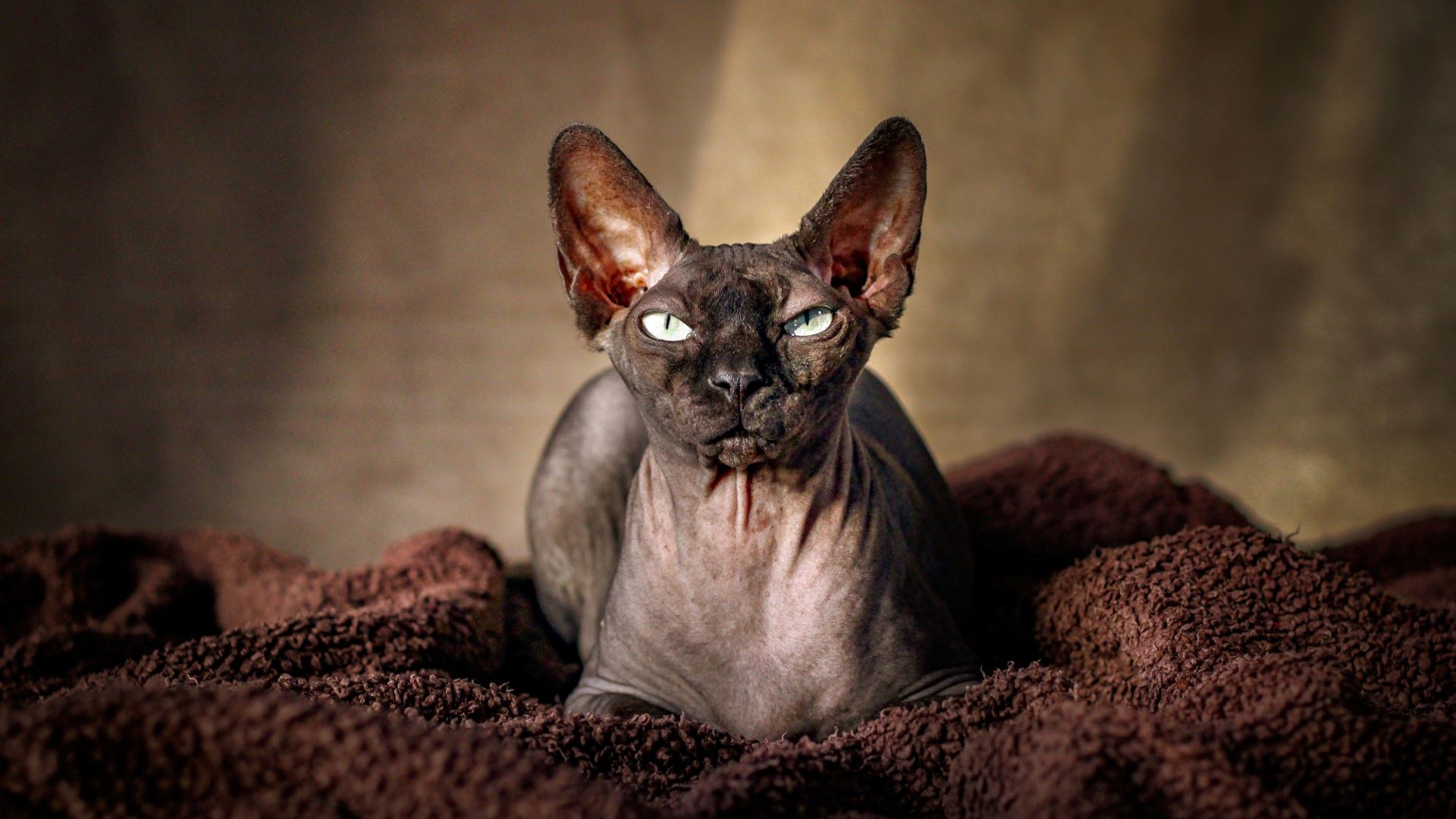
Hairless breeds have emerged more than once throughout the history of feline domestication and may be traced back to Ancient Egypt. However, the modern sphynx breed we know today has its roots in 1960s Toronto, Canada due to a random genetic mutation that resulted in a kitten being born hairless and a breeder who decided to carefully continue this mutation into future litters.
Today, the sphynx is known for being energetic, acrobatic, and playfully mischievous. They thrive on attention and enrichment, and can quickly become distressed and destructive when consistently left alone.
17. Exotic shorthair
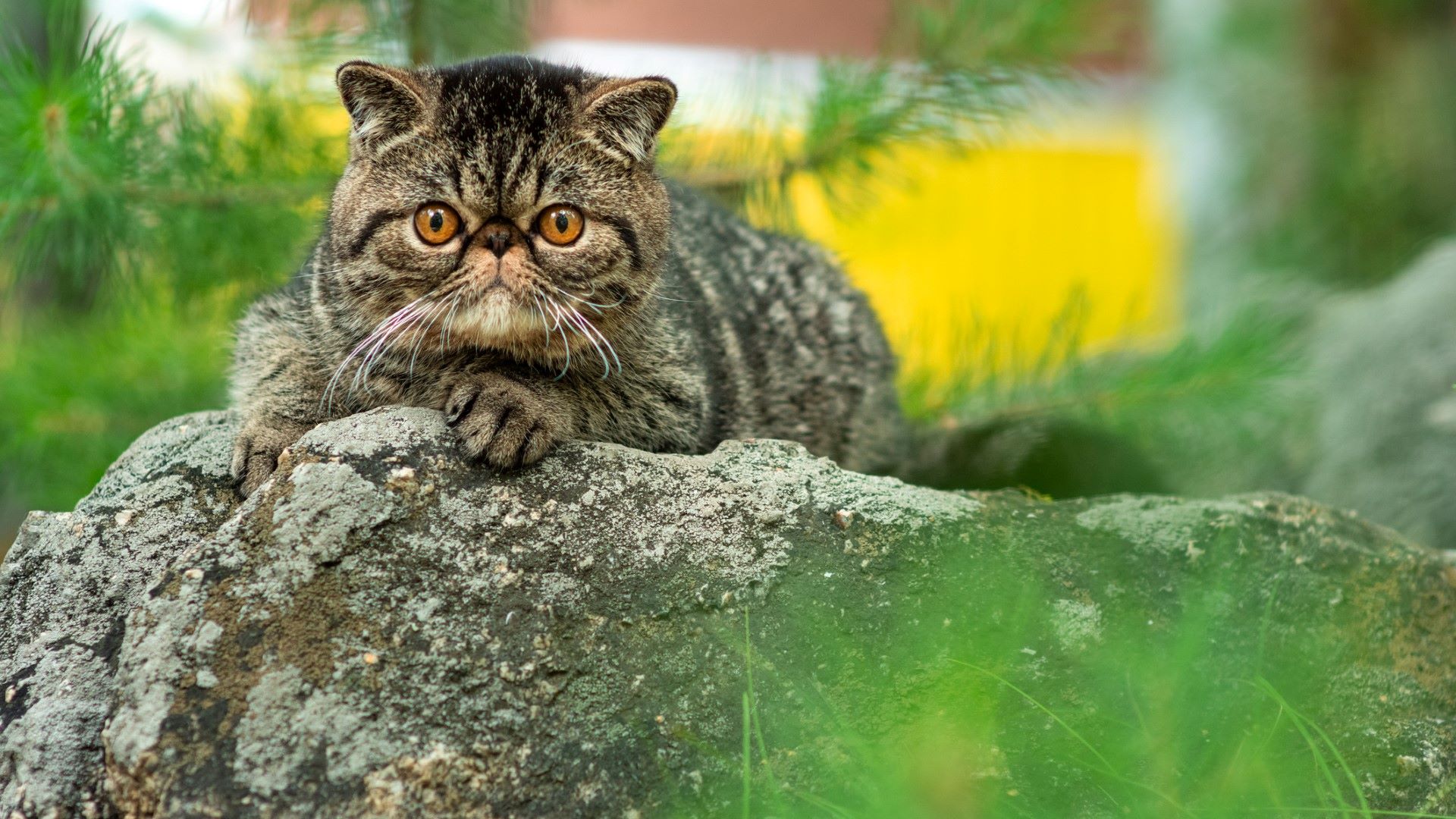
A result of breeding Persians and American shorthairs in the 1960s, the exotic shorthair features the rounded and short-muzzled face of a Persian cat with a silver American shorthair coat. Like Persians, the exotic shorthair is known for its gentle, docile, and slightly shy personality.
These cats typically become deeply attached to their immediate family members. They will often follow their favorite people around, although they are more mellow about being someone’s shadow than other kitties on this list, such as the Burmese.
18. Abyssinian

The sleek, graceful Abyssinian's origin is a bit of a mystery, although their breed name refers to Abyssinia (now modern-day Ethiopia). This beautiful cat is playful, curious, and athletic. They aren't known for being lap cats but rather tend to be more interested in high-energy play and light rough-housing.
Separation anxiety in these cats tends to manifest when they are lacking in consistent enrichment. Abyssinians often socialize well with other friendly pets and may benefit from having another animal buddy around when you leave the house.
19. Birman
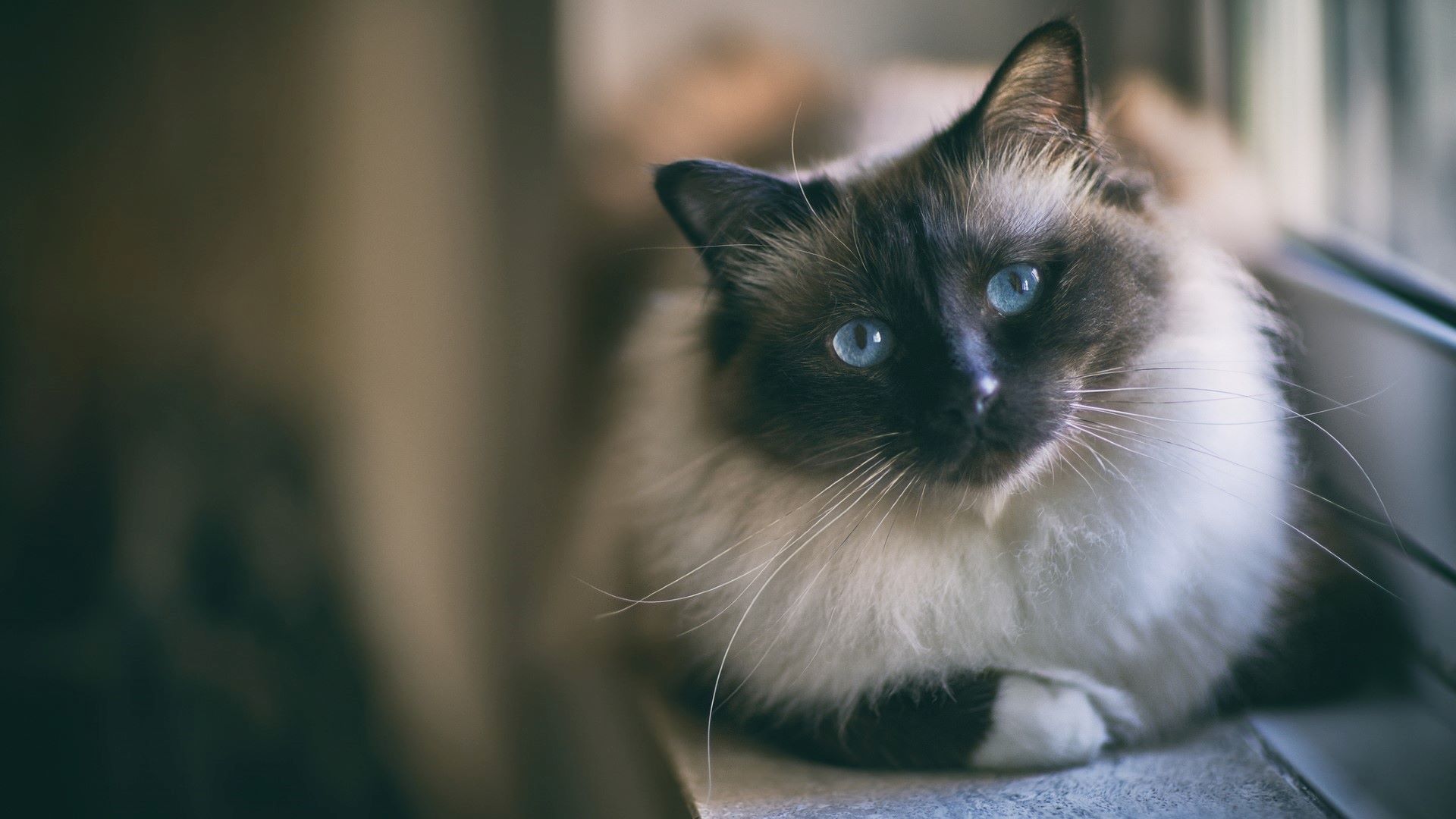
Like their Burmese relatives, the birman cat originates from Burma/Myanmar. The birman is long-coated, and stocky, and features blue eyes, dark-colored points, and white feet. They are highly people-oriented, affectionate, and generally laid back. This breed can be a bit possessive over their people and doesn't always do well with other kitties in the home.
If you work long hours and recreate often outside the home, this breed may not be the best fit as birmans do best in homes where people are often around and included in family activities.
20. Cornish rex
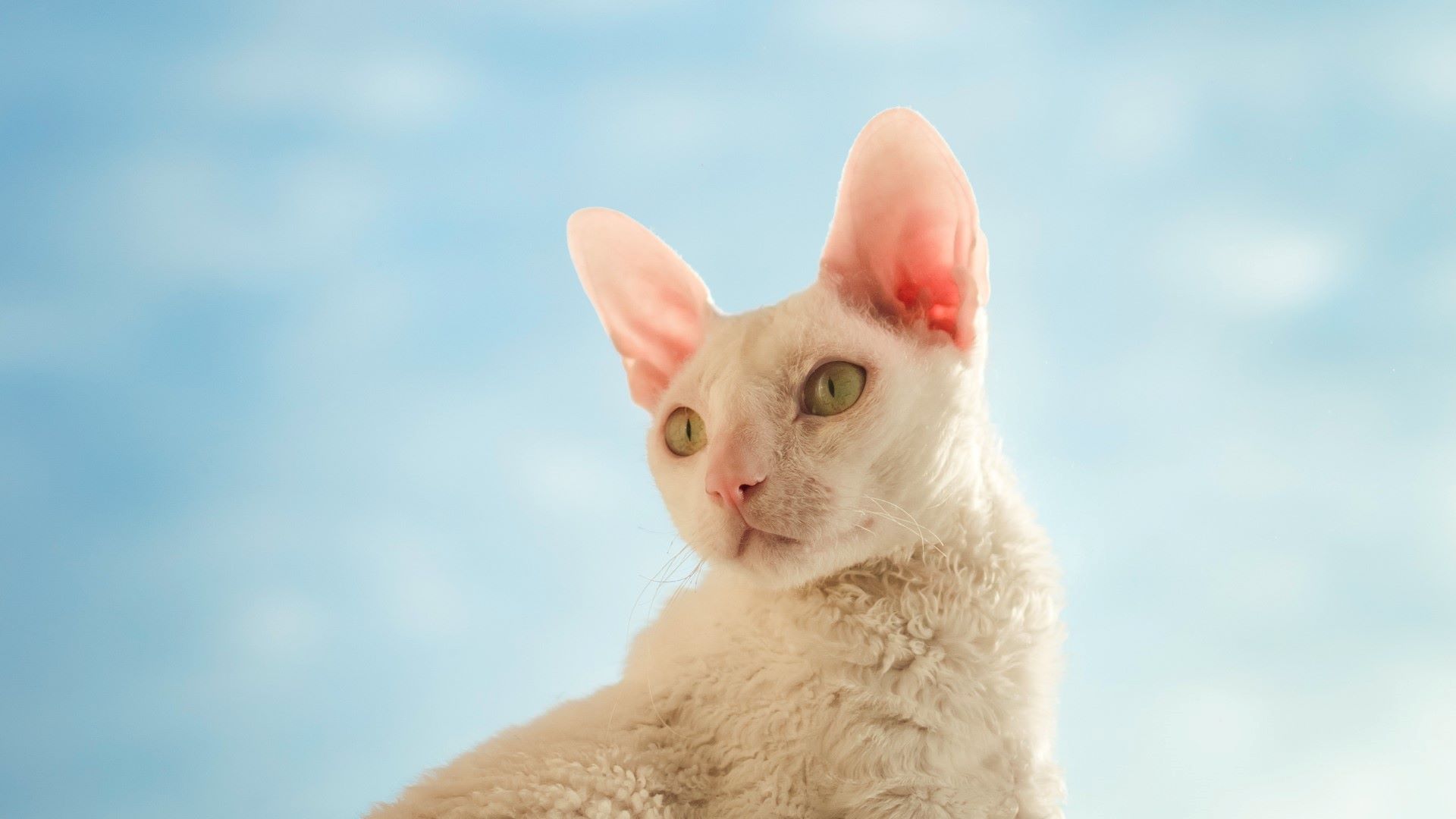
Originating from a natural mutation in the Cornwall region of England in 1950, the Cornish rex is an adorably strange-looking breed. They sport delightfully large ears, extremely short wavy to curly hair, and long, lanky legs. This breed is extremely high-energy, curious, and playful.
They thrive on attention and fun brain games for cats. If left alone for extended periods, this rambunctious kitty is at risk of suffering from separation anxiety or distress caused by boredom. Cornish rexes do tend to get along well with other pets and will likely fare better with a constant canine or feline pal.
21. Bombay cat
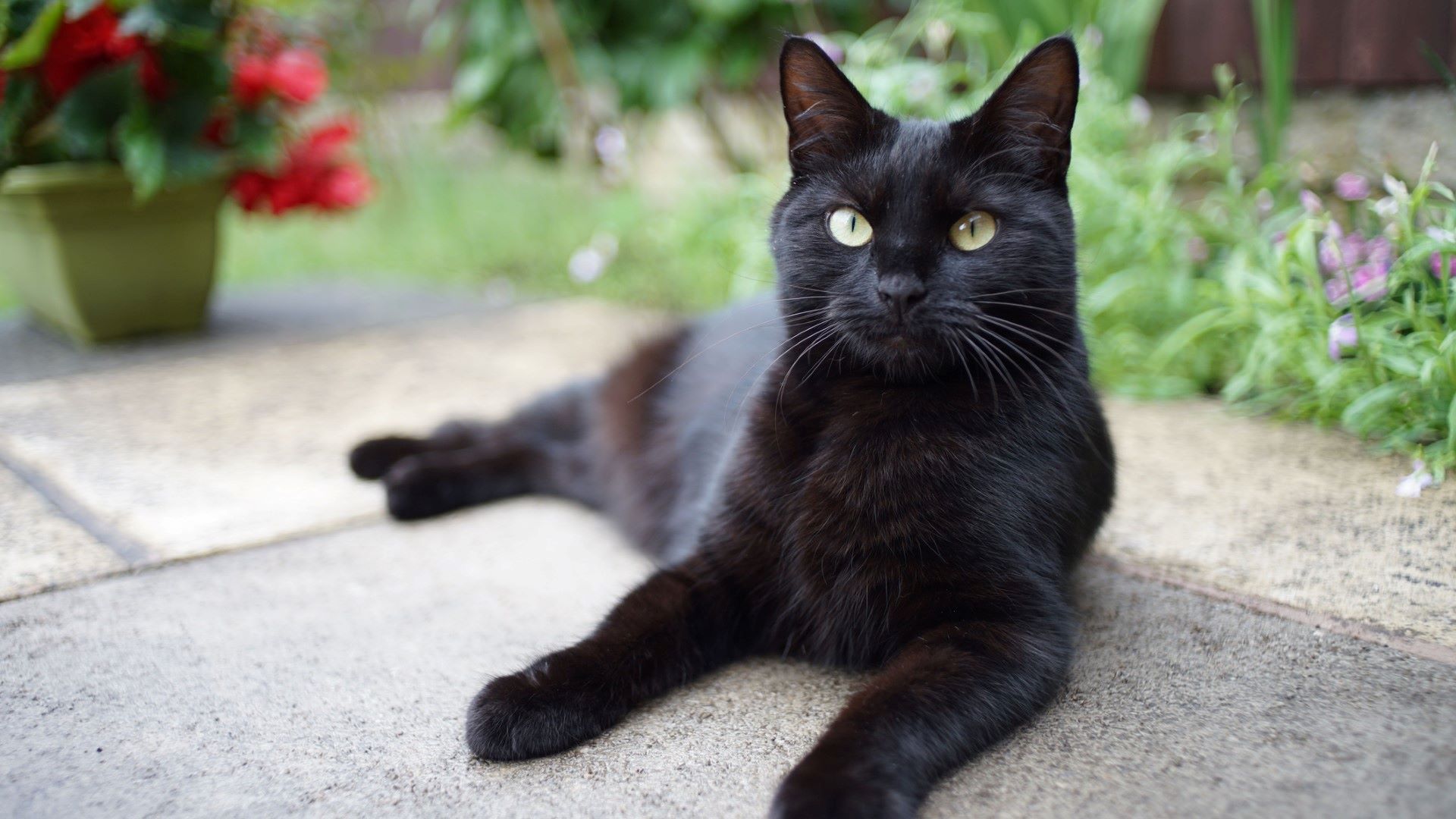
Emerging in Louisville, Kentucky in 1958 by breeder Nikki Horner, the Bombay cat is a sleek, muscular, all-black, short-haired breed with striking, panther-like yellow eyes. Highly affectionate, curious, and moderately active, the Bombay is a wonderful family cat. They bond strongly with their people and tend to be outgoing and friendly with strangers. This breed is notably sociable and tends to struggle without consistent social enrichment.
22. Cymric
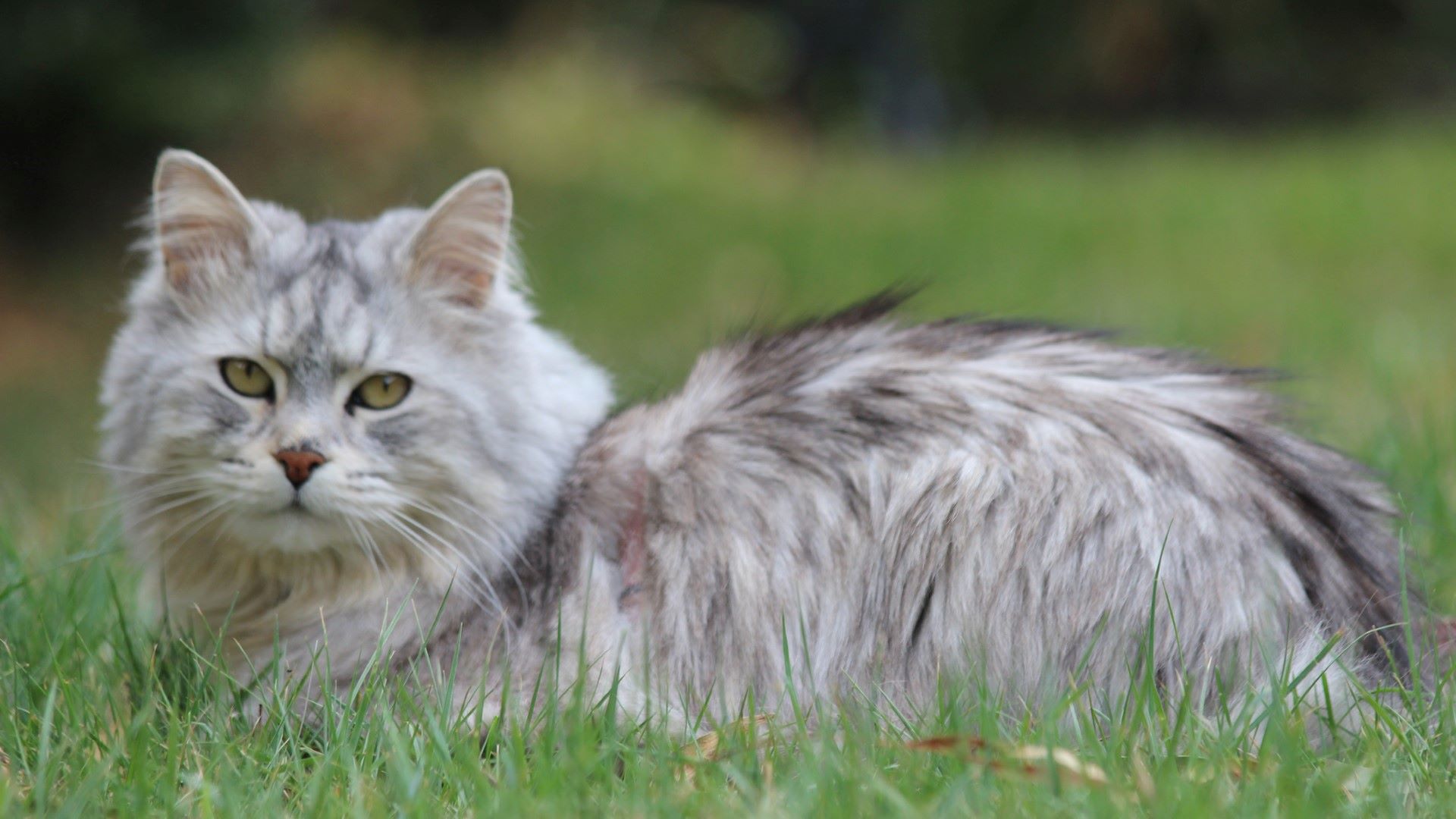
The origin of the cymric isn’t fully understood, but many researchers of the breed believe they arose from the Isle of Man, a small island in the center of the Irish Sea. Within this theory, the cats are a long-haired variation of the Manx cat. Both breeds feature stumpy tails or various lengths or no tails, and stocky builds. Sociable, playful, and moderately energetic, the cymric is an excellent family pet.
They also tend to do well with other cats and cat-friendly dogs. Highly social, they don’t fare well when routinely left on their own. These cats do best in a home with other animal companions or people who are frequently home.
23. Russian blue
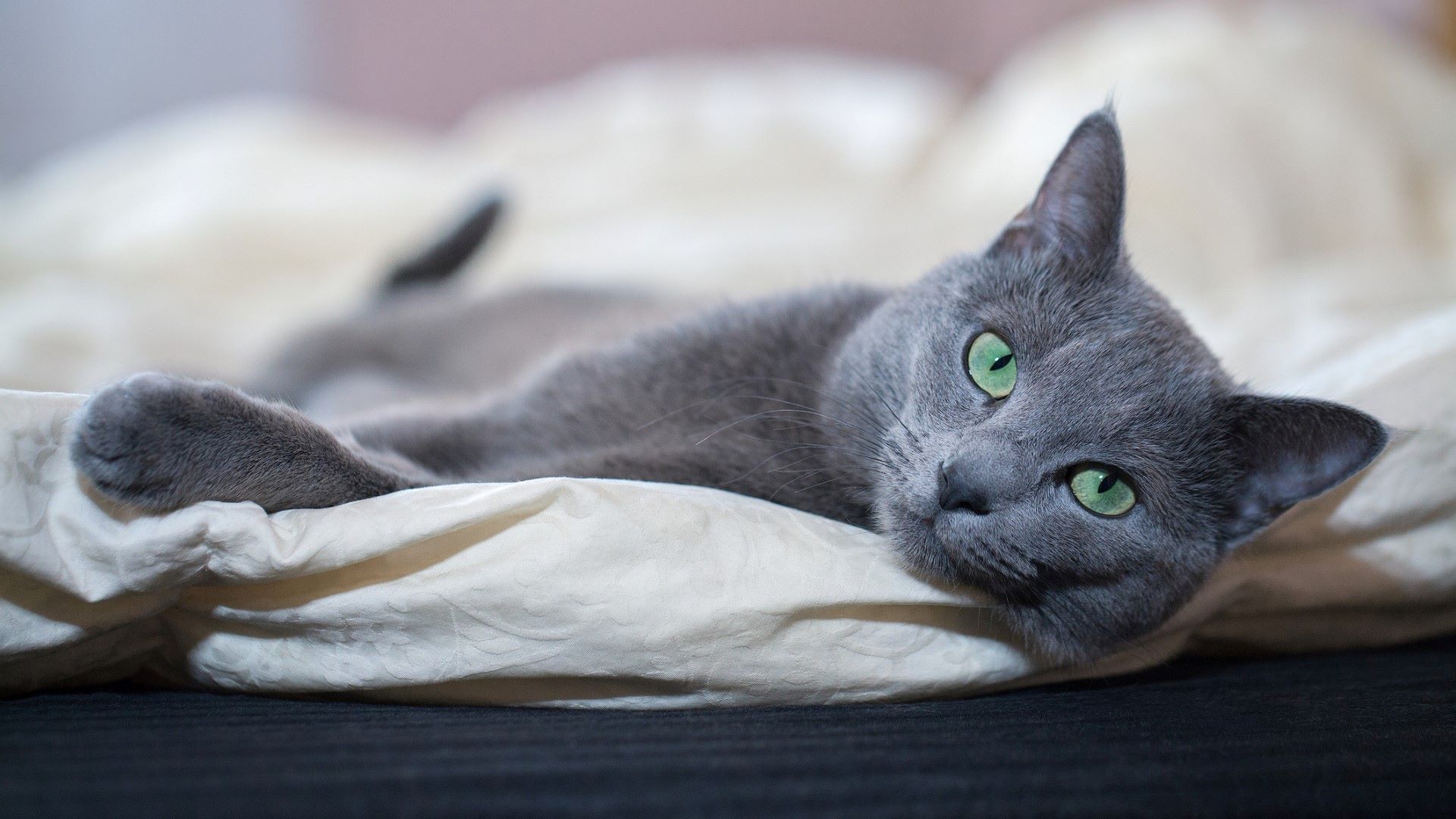
Believed to have naturally originated on the Arkhangelsk Island off northern Russia, the Russian blue cat is medium-sized, graceful, and features golden-green eyes. They tend to enjoy toys but aren't particularly high-energy. While they are a wonderful family pet, this breed is known for strongly bonding to just one person. This breed isn't especially known for having separation anxiety, but when they do, it tends to specifically happen when their closely bonded person leaves.
24. Ragamuffin

Officially separated as a distinct breed from the ragdoll cat by the United Feline Organization in 1994, the ragamuffin resulted from cross-breeding ragdolls with Persians, Himalayans, and domestic longhairs. Like the ragdolls, the ragamuffins are known for their exceptionally docile, sweet, and gentle temperament. They thrive in social homes where people are regularly home. These sweet kitties also generally do well with other pets.
Bred to be highly people-oriented, ragamuffins can be prone to distress when their people aren't home. These kitties adore being with their people and can suffer from separation anxiety when left alone. They do best in households in which someone’s often home.
25. Devon rex
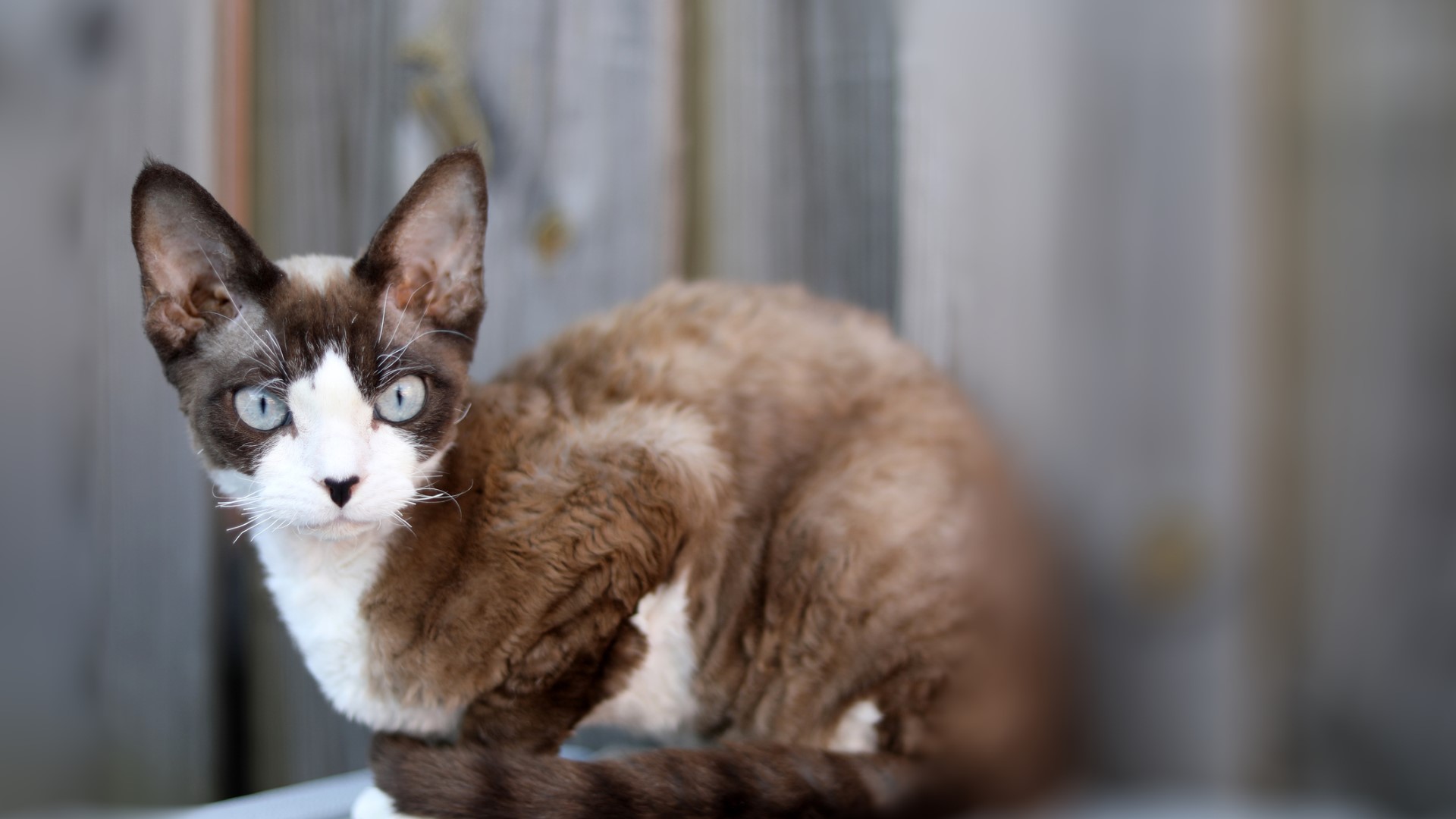
Like the Cornish Rex, the Devon Rex originated in England in 1960 from a suspected naturally occurring mutation resulting in their short but curly coat. These cats have large, pointed ears, a sleek and athletic build, and pronounced cheekbones.
They tend to be quite playful and active, and some consider them one of the most high energy cat breeds. Without consistent social, mental, and physical enrichment, these kitties can become distressed and destructive from boredom. Keeping some of the best automated cat toys on hand can help keep these high-energy cats content when you’re not home.
26. Himalayan

The lovely Himalayan cat likely arose in the U.S. in the 1930s from the careful crossing of Siamese and Persian cats. The goal of this crossing was to create a cat with the large build and coat length of a Persian and the markings, stunning blue eye color, and coat color of a Siamese. These gentle giants of the cat world are affectionate and highly people-oriented.
They tend to love snuggling and hanging out near their favorite people curled up in one of the best cat beds. They enjoy a quiet lifestyle and are excellent cats for folks who work from home since they don’t tend to be demanding or insist on lots of play. Since they can be prone to separation anxiety, living with someone who works from home is also a great setup for this affectionate breed.
27. Chartreux

Considered by many to be the national cat of France, the chartreux likely entered the country in the early 19th century by way of traders from Syria or Iran. Since then, French breeders have become enamored with this beautiful blue-gray cat. Many guardians of this breed describe them as thoughtful, sweet, and moderately playful.
They tend to be observant and enjoy watching birds and woodland critters from the window. This level-headed cat isn’t known for developing severe separation anxiety, but they do often bond closely with their family and do best with consistent social interaction.
28. American shorthair
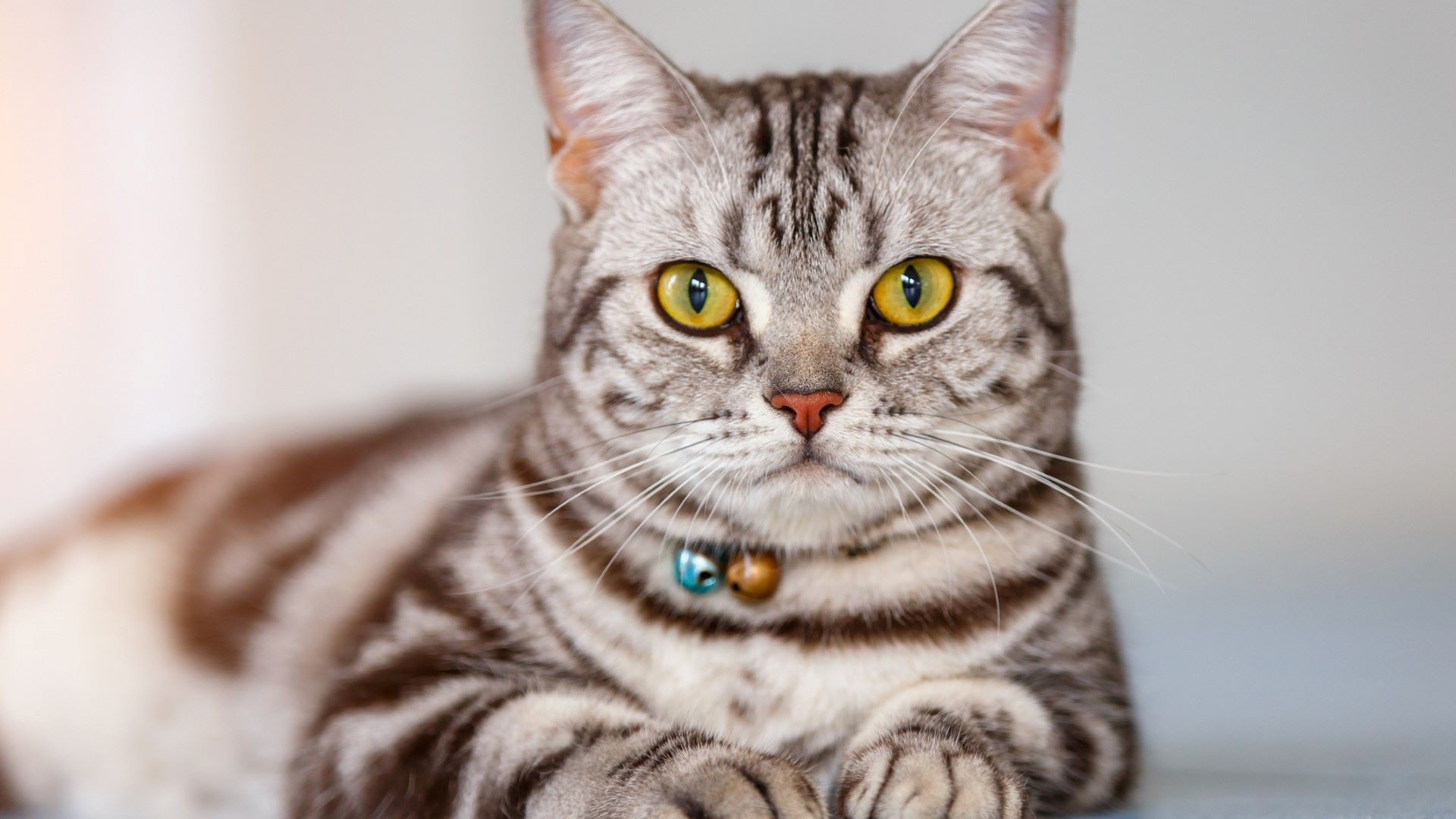
The American Shorthair likely descended from European short-haired breeds that were excellent farm cats and prolific mousers. Muscular, agile, and curious, these kitties enjoy cat-friendly adventures and enrichment with their family. They may also enjoy going on walks. Just make sure to slowly acclimate them to wearing a harness by using small steps and creating positive associations by using some of the best kitten treats.
These cats love being part of the family, so long absences can cause distress. They do tend to love watching wildlife from windows, so you might want to try leaving some curtains open when you’re gone so they can be more entertained.
29. Balinese
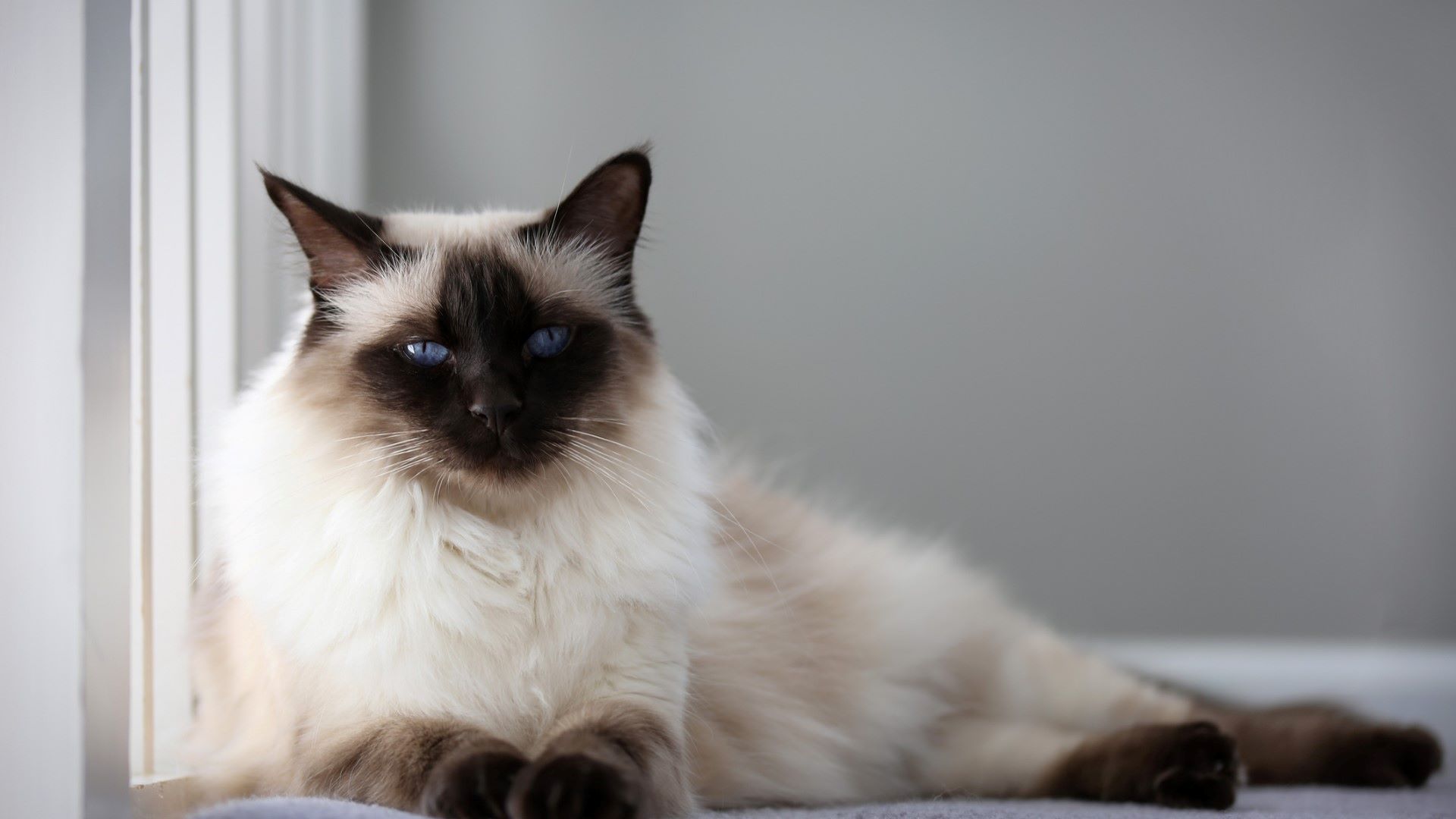
Also known as the long-haired Siamese, the Balinese cat features Siamese point markings and eye coloration. Despite their name, these kitties did not originate in Bali. Instead, U.S. breeders created them in the 1940s, likely by crossing Siamese cats with stocky long-haired breeds like Persians. These stunning cats are known for their intelligence, curious nature, and playfulness. They’re also typically quite vocal and will readily let you know when they want attention. When left alone for too long they can develop anxiety.
30. Scottish fold
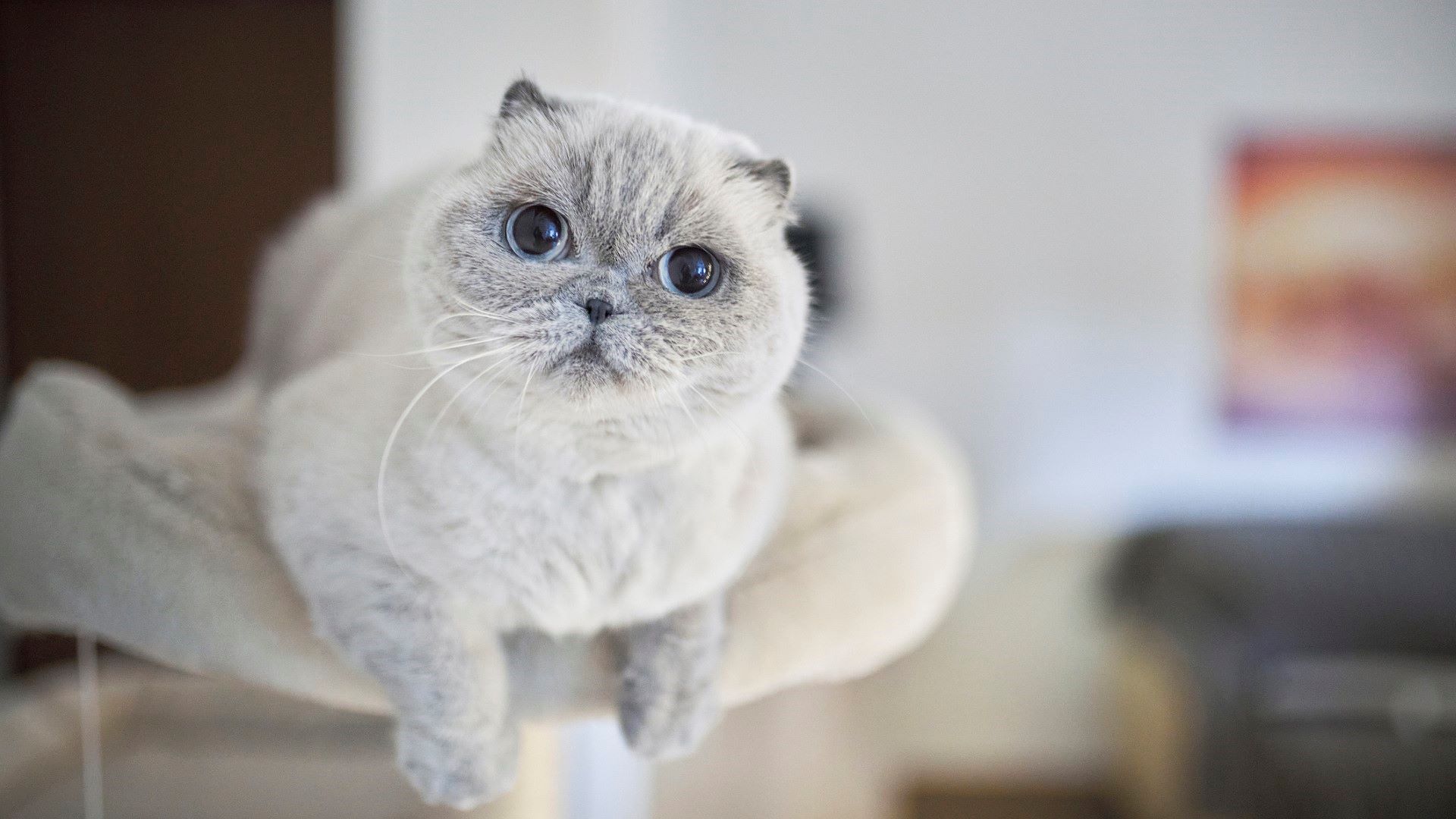
Arising in Scotland in 1961 from a spontaneous mutation, the Scottish fold features folded ears that give this kitty’s face a distinctly round appearance. These cats are known for bonding closely with their family and getting along well with other pets, including friendly dogs.
They’re less prone to developing separation anxiety when they have other animal companions in the home to bond and socialize with. When left entirely alone for many hours per day, this breed often becomes destructive from stress.
31. Shelter kitties
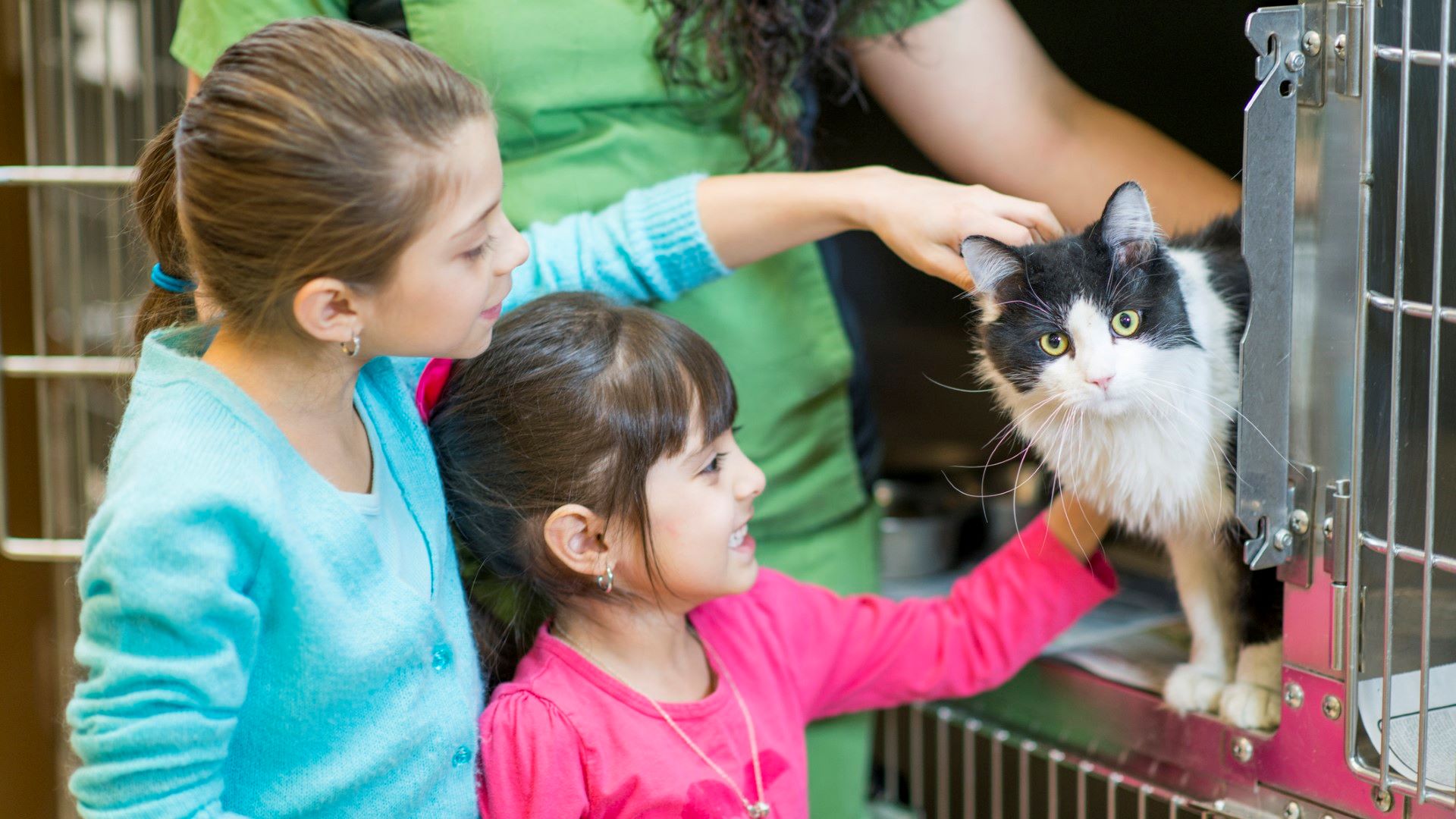
While not a specific breed, shelter cats often bond strongly with the person who rescues them, although some individuals may take a long time to trust their adopter. Some shelter cats have endured immense trauma or haven’t had adequate enrichment and social bonding throughout their life and tend to need additional support.
While some shelter kitties are aloof, others don’t fare well when left alone for many hours a day. Consistent, gentle social interaction can help these cats feel safer and more comfortable in their post-shelter lives.
32. Siberian
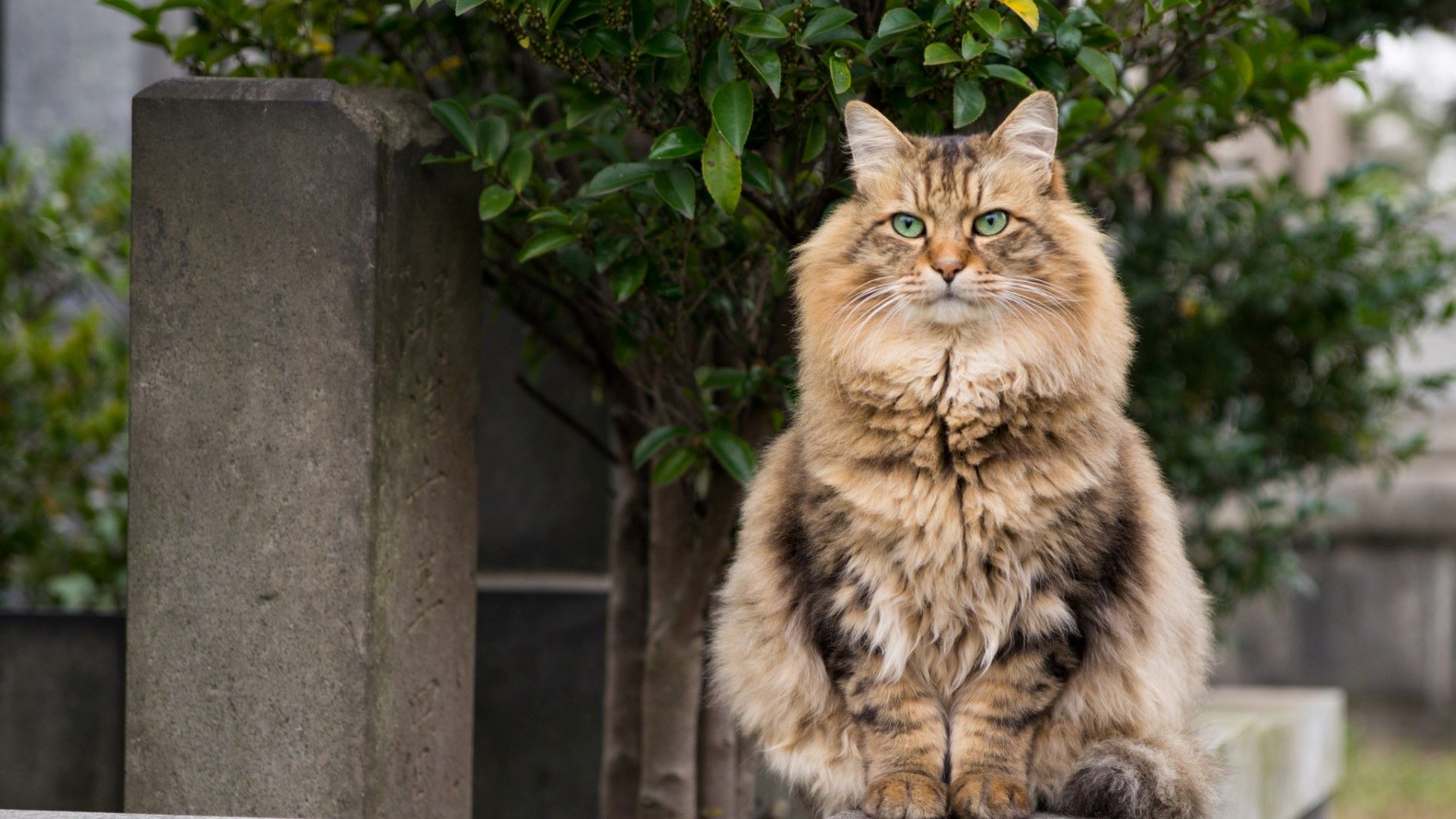
The descendant of domesticated and wild Russian forest cats, the Siberian cat is one of the most ancient cat breeds. Some breed historians believe them to be the ancestors of all modern long-haired house cats. This stunning cat features a luxurious and dense coat that comes in a range of colors. They are quite rugged and many enjoy outdoor activities, including playing in water.
They’re known for being friendly and outgoing with pets, their human family, and strangers. These cats thrive when they are an active part of their family and can become destructive without consistent social engagement and enrichment.
Cammi is a freelance writer with over 5 years of experience specializing in creating accessible and engaging pet, wildlife, and mycology content. She’s passionate about sharing accurate, ethical, and animal welfare-centered writing that fosters understanding, curiosity, and compassion for our pets and the natural world. She lives off-grid in a self-built cabin with a rambunctious pack of rescue and foster dogs. In her spare time, Cammi enjoys volunteering with animal shelters, foraging for mushrooms, playing viola and guitar, and traveling.
